Looking for this season’s deer rut predictions?
See our 2025 rut predictions. And, for all things deer rut, from biological insights to current and past rut reports, dig into our full deer rut collection.
If you find yourself in a room with about 30 elite whitetail hunters and start asking them questions about hunting tactics and advice, you might imagine getting about 30 different answers. However, there is one thing every whitetail hunter will agree upon, and that’s the fact that the rut is one of the most exciting times to be in the woods chasing big bucks.
For our 2023 rut predictions we polled over two dozen onX Hunt Ambassadors to not only tell us when we should be in the woods this season, but how to hunt the rut, what weather conditions are best, what gear is most needed, and even how to calculate your own peak rut prediction for your area.
What Sets the 2023 Whitetail Season Apart
Seasons change, conditions change, and terrain can change, but annual animal patterns tend to remain consistent. When considering when and how to hunt the 2023 rut it’s important to consider what changes might make the most impact to your hunting strategy and chances for success this year. Here’s a few you might want to consider.
There are several parts of the country where deer populations are steady or growing. The southeast, in general, is reporting strong deer-density numbers, with bucks in Tennessee reaching older age classes, total deer populations in Mississippi reaching an all-time high, and the reported harvest in Louisiana has set a new 10-year high for each of the past three seasons.
For those who like to know what the moon is doing during the rut, this year there will be a full moon (aka. The Hunter’s Moon) on October 28, and for those who follow the moon’s 19-year Metonic cycle might recall that when the full moon fell on or around October 28 it coincided with an early rut.
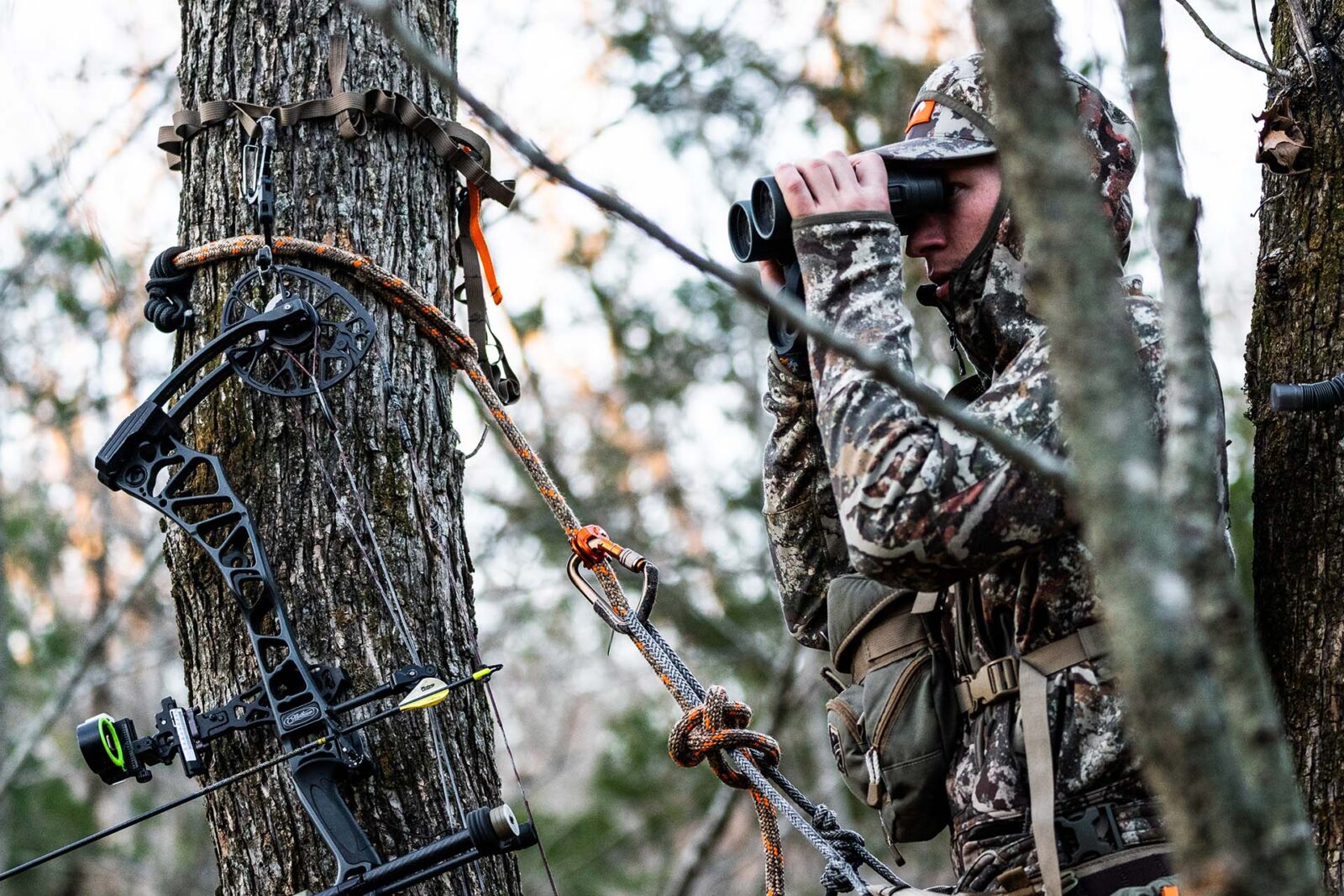
How To Hunt the 2023 Whitetail Rut
One vital tactic for hunting the rut is to know when to move and when to stay put. Our onX Ambassadors weighed in heavily on this topic, with most saying being mobile is the key to success. Regardless of being mobile or not, hunting the rut is an all-day commitment.
“During peak rut, I tend to become as mobile as possible. In my mind, the best chance to shoot a mature deer is your first time in a new location. I am also going to be more aggressive hunting in or near bedding areas where I know does spend a lot of time.
“My favorite location to hunt peak rut is along the downwind side of a thick, thick bedding area where bucks will cruise to scent check for does.
“Being more mobile also helps me find more bucks that might be locked onto a doe. And in that case I can move to the ground with a decoy and try to pull the buck into range or put a stalk on the buck that is locked onto the doe.” – Sam Soholt, Public Land Hunter
“I am definitely a lot more aggressive during the rut. I usually spend most of my time doing hang-and-hunts in different areas and jump around regularly, sticking around thicker areas and bedding.” – Emily Schaad, Novix Outdoors
“As the rut begins to get in full swing and deer movement is at its peak, I tend to lean more on glassing and being mobile. The rut can be mentally challenging as well, so I continuously prepare myself for the November grind; all day hunts no matter what, increasing the opportunity odds.” – Josh Ilderton, The Untamed
“I take a different approach during peak rut than I do most of the rest of the season. Most of the season my hunts are concentrated in and around food sources. During the rut, I tend to push into the timber more and specifically on the downwind sides of known doe bedding areas. I’m also hunting more hours during that time frame. There really isn’t any kind of pattern you’re hunting, so more treestand hours equals a higher opportunity rate.” – Randy Birdsong, Headhunters TV
Understanding Buck Patterns
Most onX Ambassadors were clear: Rutting bucks are hard to pinpoint, so hunting the rut is trying to be in the right place at the right time. But what many shared with us is that there’s a difference between patterning a buck during one season (which can be difficult) versus patterning a buck year-over-year (which can be more reliable). When trying to understand buck patterns, think long term and keep good notes.
“I track buck patterns very closely. One of the biggest things I use is annual patterns. We’ve had deer show up and leave our property on the same day year after year. In 2021, we had a big buck show up on November 11, and hunted him hard but never saw him. In 2022, we had not had any trail cam pics of him, and then he showed up on November 11, 10 yards from our tree and my brother shot him. Same buck, same wind, same day — a year later.” – Nathan Krick, Identical Draw
“Bucks are obviously harder to pattern during the rut, but it’s not impossible. In fact, I’ve seen bucks that do the same thing, to the day, on a YEARLY basis. An example is a bonus buck that only showed up on our farm for a few pictures, but on the same day, on the same scrape, one year apart.” – Brad Bever, Arttec Branding & RACK HUB
“The deer we named ‘Straight Up’ gave us some of the best intel of any deer we have ever hunted. Straight Up was a constant, meaning I have every shed from two to five years of age and killed him when he was six. The crazy thing is, he would summer on one farm and then
move almost two miles in October of every year to another farm. He was like clockwork and you could be assured when he made his move it was time to start thinking pre-rut. Even better was he had a favorite scrape and he would return to that exact scrape every year.” – David Holder, Raised Hunting
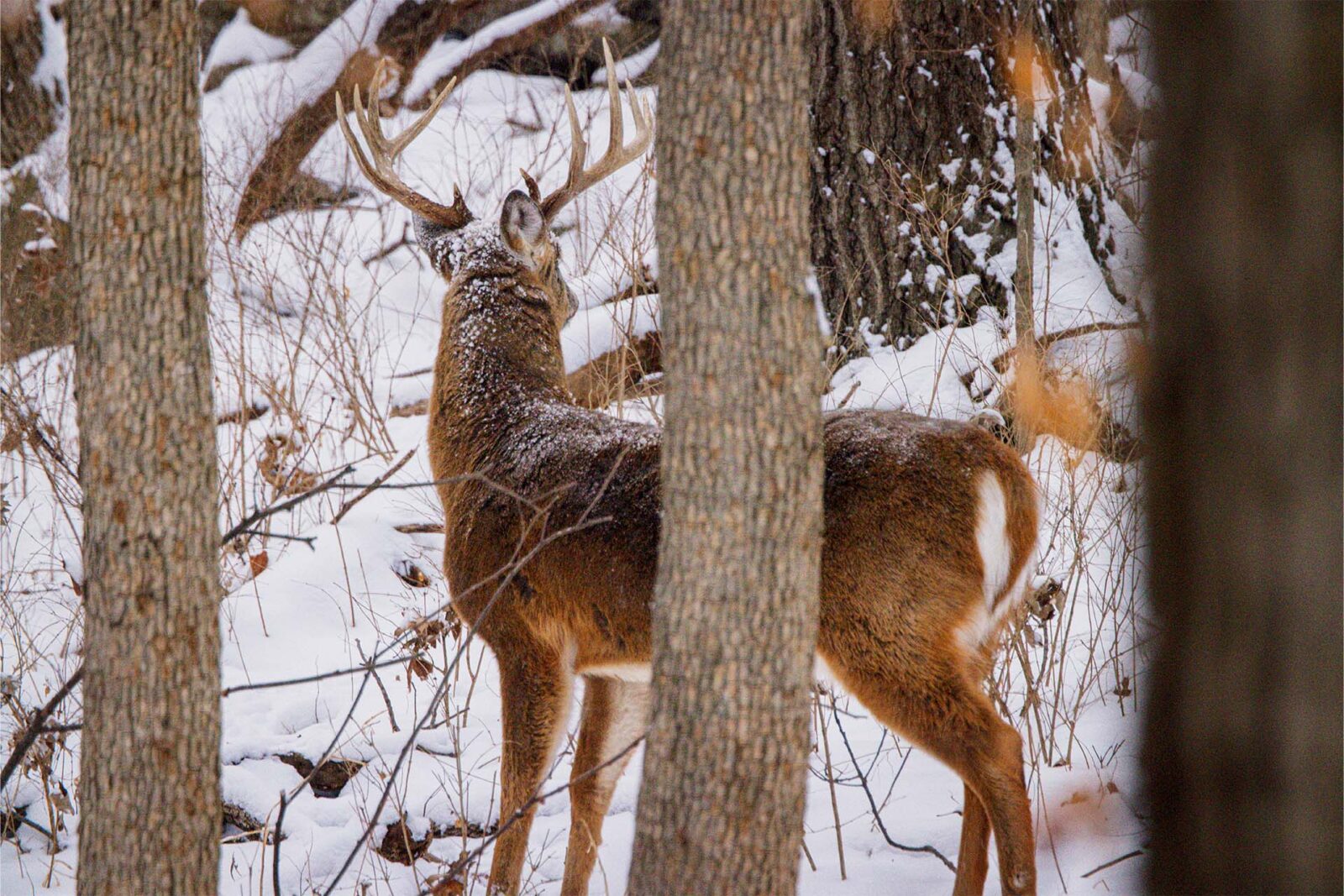
Best Weather Conditions
One question we posed to nearly 30 whitetail hunting pros, devotees, and self-proclaimed fanatics is picking the best weather conditions for hunting around the rut. With the responses we got one would think they all kept the same weather station at deer camp.
With very little variance, the best weather conditions were having a north/northwest wind between 7-12 MPH right after a cold front had moved through. This wind window was generally agreed upon as having enough wind to cover movement of the hunter and blow in a consistent direction but not too much wind to dampen deer movement (ie. 15+ MPH).
Where there was variance amongst Ambassadors was choosing between hunting clear days, cloudy days, or overcast days. Many, though, seemed to favor those days with a slight drizzle and a crisp (but not too cold) air temperature.
“The ideal weather conditions for me during the rut are a clear blue sky, high-pressure day just after a rain front has moved through with colder temps on the back end of the front. I like a little wind instead of it being dead calm for two reasons. One being you have a committed wind blowing in one direction and not variable swirls that sometimes happen when it’s too calm. Secondly, I like to have some noise cover when I’m in the stand; leaves blowing around slightly, etc. Deer can hear everything when it’s too calm.” – Rusty McDaniels, Mossy Oak
“I love hunting all types of weather patterns. But if I had to pick one, it would be a clear week (not 1 day) after a cold front that had a significant amount of rain involved at the end of October. I like to put several days in a row in an area. Ideally, it would be cooler temps. Maybe the first frost of the year. Wind direction would normally be NW and not still, maybe 5-10 MPH.” – Rusty Johnson, United Outdoors
Pro tip: Set up Optimal Wind on any Waypoint in onX Hunt.
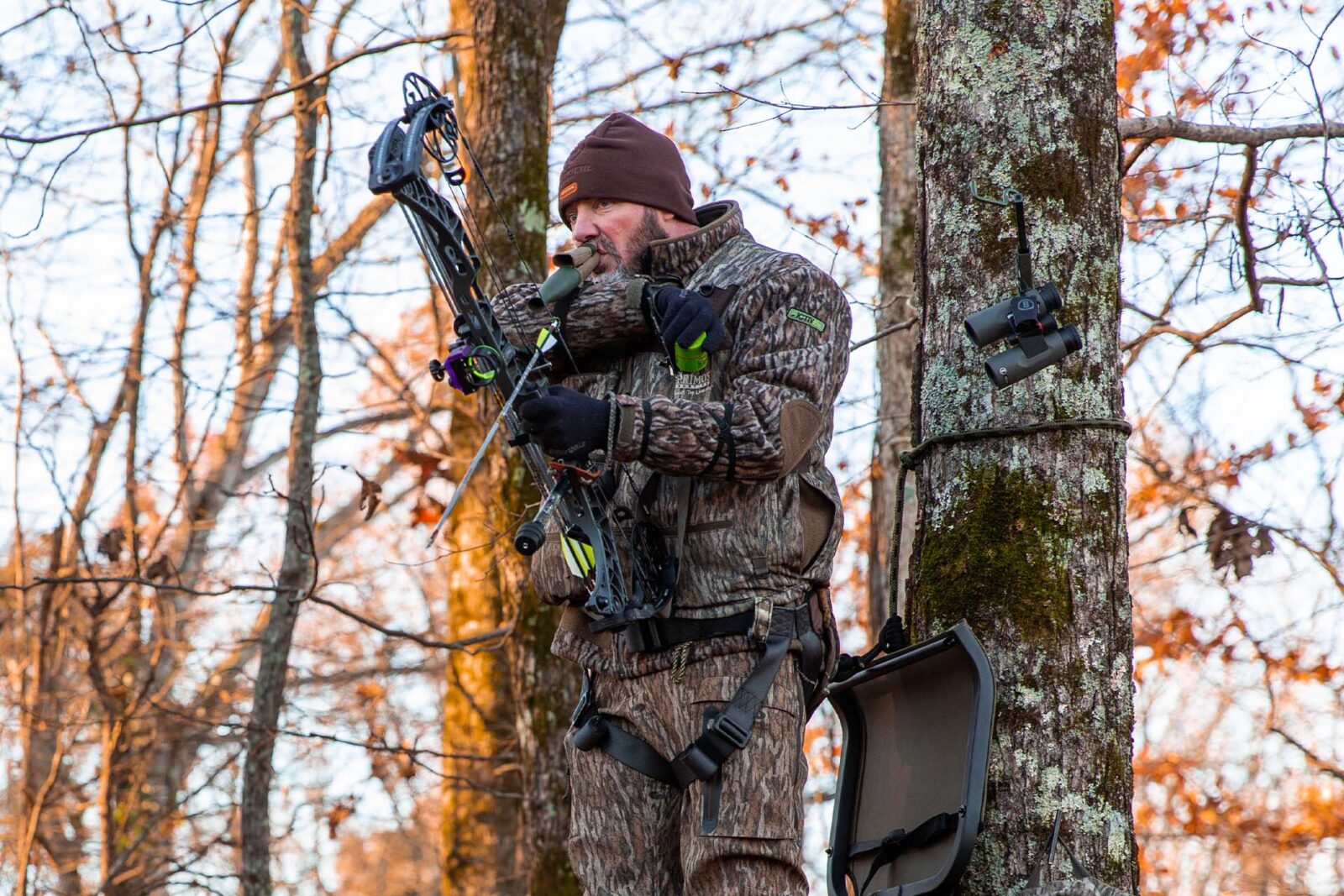
M.I.G. (Most Important Gear)
We all have the one piece of gear we’ll trek back to the truck for, but it’s different things for different people. Our Ambassadors were no different. When the rut is on there’s at least one piece of hunting gear they won’t go without–for many of us here, it is our hunting app.
“My number one piece of equipment that must be with me throughout the season is a combination: my grunt call and rattling antlers. I have seen both work phenomenally starting as early as October 1 and as late as January 1. There is no better feeling than watching a big mature whitetail hit the brakes or change his course the moment he hears you calling to him. My favorite call is the Primos Power Buck and Doe set for the deepest grunt possible and a real set of antlers, preferably the densest ones I can find. Just talking about it gets me excited for the coming season.” – David Holder, Raised Hunting
“I wouldn’t hunt without my binoculars, but also more importantly not without my merino wool base layers. You have to put time in the tree, so solid, reliable base layers are 100% essential.” – Matt Dye, Land & Legacy
“As cliche as it might sound, my answer to this one is pretty basic. When I’m bowhunting here in Iowa, most often I’m hunting from a treestand. Therefore the one piece of gear that I will not head to the field without is my safety harness. I either turn around or just sit on the ground, changing my hunt plans. Like I said, I know it’s kind of cliche but for me there’s no deer worth getting hurt for.” – Josh Sparks, 41 North Media & Midwest Whitetail
“There’s not many items outside of the necessities that I am turning the truck around for during the rut, but one of those items is Nose Jammer. A mature buck’s number one sense for survival is his nose and while they may let certain things slide during the rut, they are much more likely to keep about their business if they catch a whiff of something less disturbing than human odor!” – Michael Hunsucker, Heartland Bowhunter
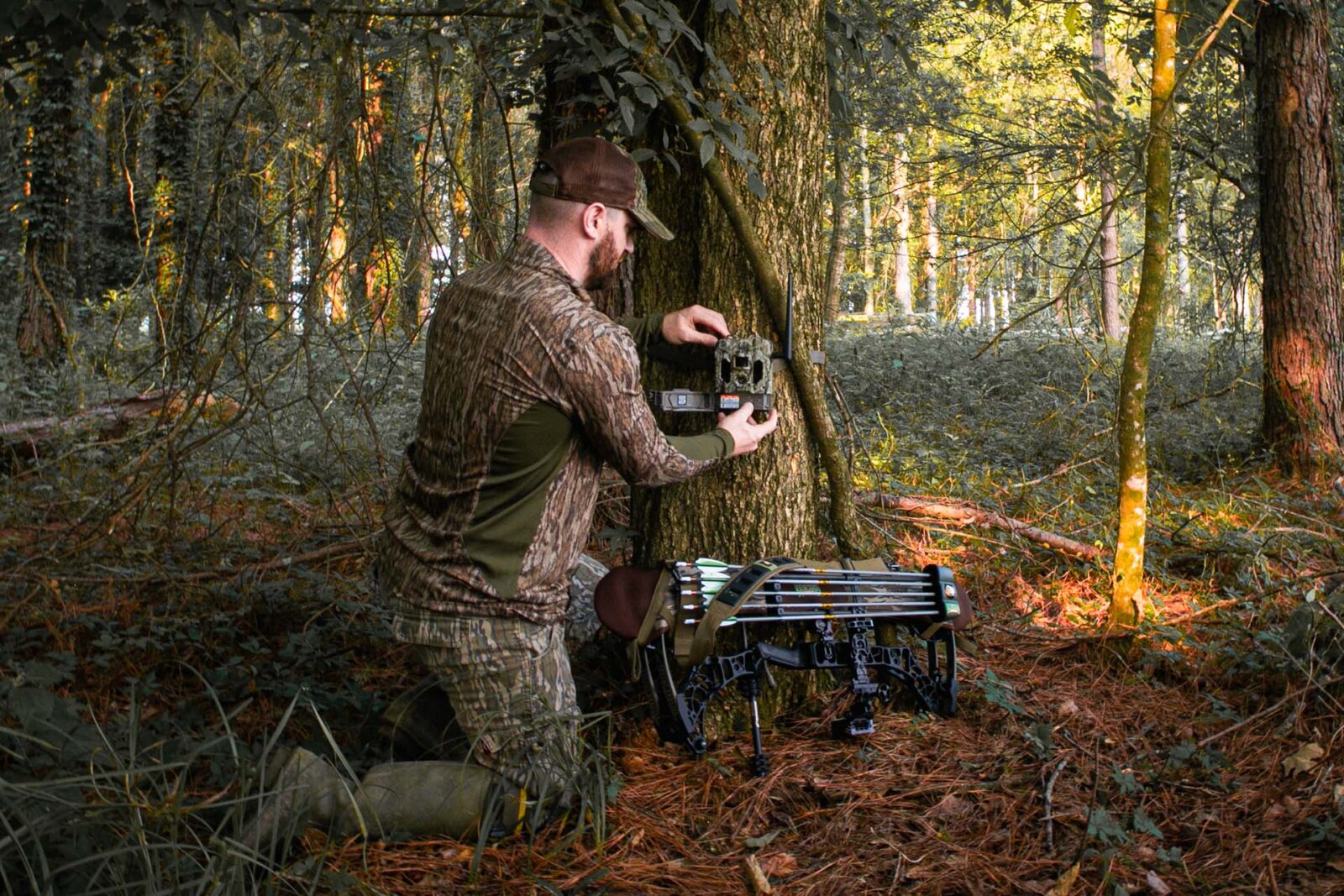
Using Trail Cameras To Hunt the Rut
Trail cameras are an integral part of whitetail scouting and hunting, and onX Hunt’s new Trail Camera Integration will be a game-changer for their use in the field. But using them for the rut requires a different strategy than pre-season tactics. Luckily, our Ambassadors have tips and tactics to get more utility out of yours during the rut.
“Leading up to the rut I’ll position cameras on existing community scrapes, as well as make scrapes where I want the activity to be and put cameras there. But once that last week of October hits I stay out and only hunt if there’s a mature deer hitting those scrapes. The only thing that changes is that I’m monitoring scrapes vs. food.” – Jeff Althoff, Love The Grind TV
“I really like placing cameras around community scrapes during the rut. They are an excellent indicator of what part of the rut we are in and it is also a great buck inventory tool that will be useful for the following year. I know that if scraping activity is really high, then it suddenly goes cold, there is probably a hot doe nearby occupying the attention of the local bucks. I was able to tag a buck last year with the help of trail cams using this strategy.
“I typically won’t move the cameras much. If I did my due diligence earlier in the year I already know where the best scrapes are and will have my cameras there at least a month before the rut, and will leave them until the end of season. I usually only check them when I am hunting near them.” – Andrew Maxwell, The Southern Outdoorsman
“Especially during the rut, I like to run cameras on video mode to understand the demeanor of bucks and see if bucks are trailing on camera. My favorite rut trail camera locations remain on primary scrapes, tight entrances to primary food sources, and will run cell cameras near primary bedding areas.
“What I would challenge all trail camera users to consider for the rut is keeping the data to compare for future years. There is a lot of hard data and empirical data that bucks will do the same thing year after year. So when the rut feels unpredictable, reference data from years before to help develop a plan.” – Jake Hofer, Exodus Outdoor Gear
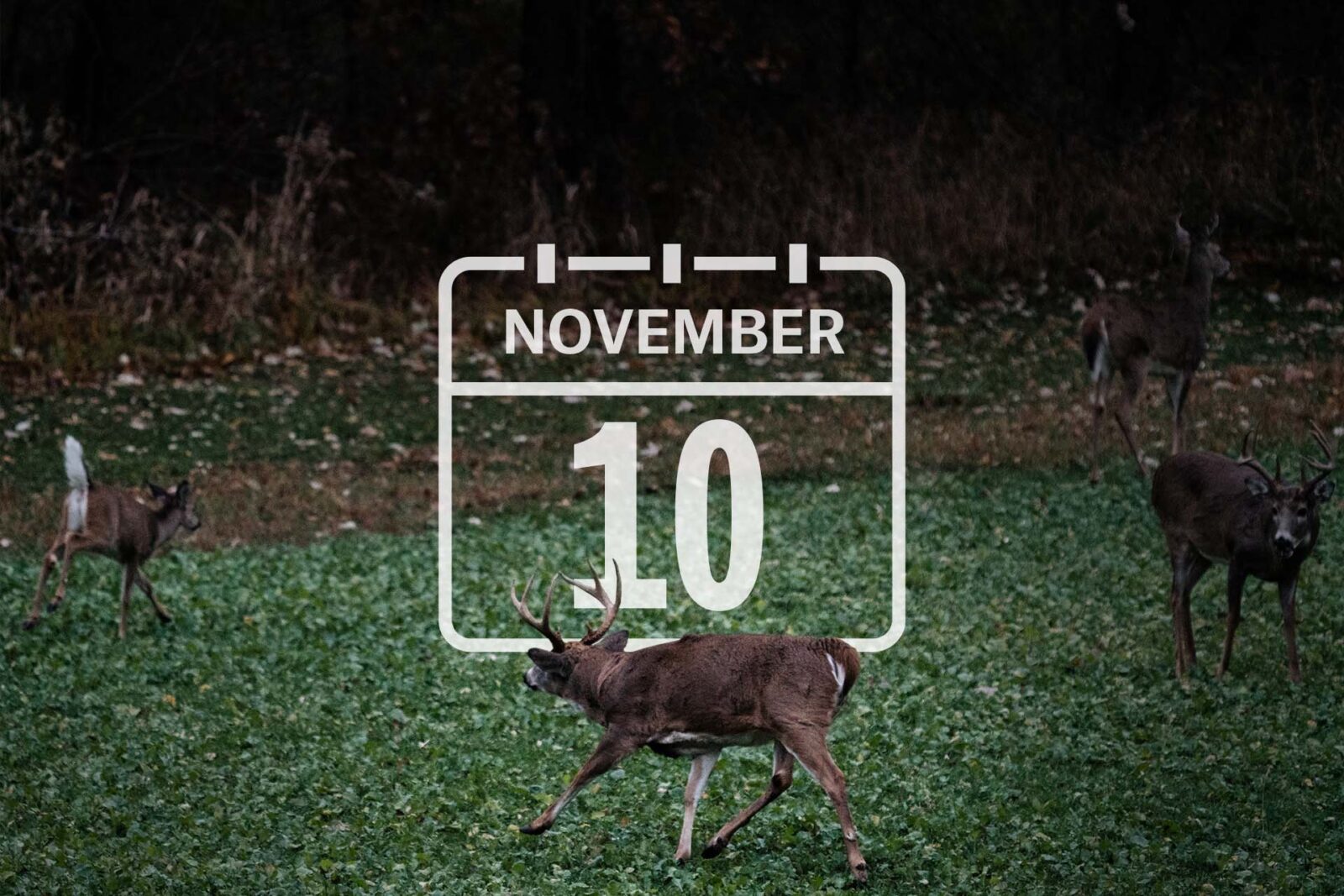
Best Days To Hunt the 2023 Whitetail Rut
Those who study the biology of the rut and love hunting big bucks during the rut will already be familiar with one prime rut date: November 7. Why this date? Well, more than one Ambassador shared that this date (and on November 8) the most Boone & Crockett record book bucks have been harvested. And while November 7 and 8 are still top choices for many who we polled, it wasn’t the most targeted/I’ll-sit-in-a-stand-all-day-no-matter-what day.
That day is November 10. If there was only one day you could hunt the entire season, this would be the day nearly everyone would tell you to be in the woods. If you could be in the woods for three days, most would say November 8-10. But if you could be in the woods for a whole week, make November 10 the midpoint.
“My all-time favorite time to be in the tree is November 10th in the morning, downwind of a bedding area.” – Jake Hofer, Exodus Outdoor Gear
“I killed my two biggest public land bucks on the 10th and the 11th and in most of the states I hunt, the best rut activity typically shows in the second week of November.” – Tyler Jones, The Element
“Based on trail camera data, Nov 7-10 has the most mature bucks on their feet and would be ‘can’t miss’ days.” – Dean Partridge, Canadian Whitetail
Another date range that trended amongst our Ambassadors was the last week of October and first day or two in November. Jeff Althoff of Love The Grind TV told us, “I strongly feel that if you’re targeting a mature 5+ year old deer, that [October 25-28] is the best time. If you’re a hunter and okay with a 2 or 3 year old deer then I would pick the 1st week of November when all of the young deer are flying around.”
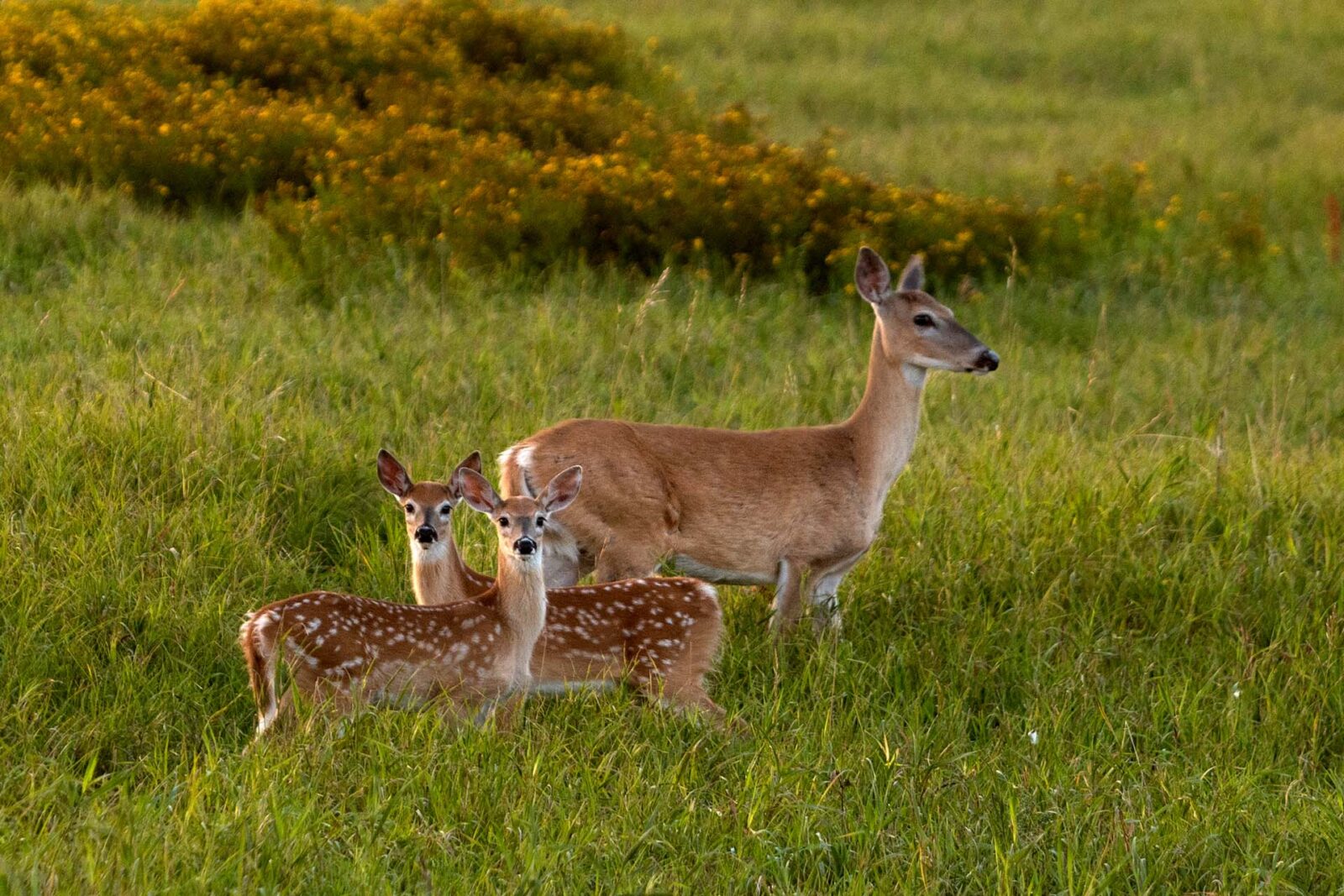
Calculate Your Own Rut Prediction
As much as these annual rut predictions can provide accurate dates for large swaths of the country, “the timing of the rut is controlled by the presence of females willing and able to breed,” as detailed thoroughly by the MSU Deer Lab.
There is variance of the average or peak breeding date between deer populations and individuals. The MSU Deer Lab notes that the greatest variation in peak breeding dates occurs in a whitetail’s range as it moves latitudinally, north to south, but also varies amongst individual deer in a localized population.
So how can you calculate your own rut prediction in your area? Talk to your local wildlife specialist and find out when most fawns are dropping in the spring, then work backward from there. The gestation period for whitetail deer is approximately 200 days. If you can understand when most fawns are dropped you can know when most does enter estrus and are bred.
According to the MSU Deer Lab, “The window of time in which we as hunters might observe an individual doe in ‘estrus’ or in ‘heat’ from start to finish, can range from 24 to 48 hours. The cumulative effect of many females in the population entering estrus within a short period of time generates the fireworks we call ‘The Rut.’”
“The South has what is sometimes called a ‘trickle rut.’ It’s not defined at all. In Middle Georgia, the peak is generally considered to be early November, but I correspond with a local wildlife rehabber and we had a fawn last year that was theoretically conceived on September 25.” – Tanner Edenfield, Have Bow, Will Travel
Share Your Success With Us
We’d like to hear about your success hunting the rut. Did you notch your tag last year on one of our predicted dates? Or might you get your dream buck this year? Share your story with us and we might feature it on our social channels, in next year’s post, or even send you a free trail camera or onX Hunt membership.